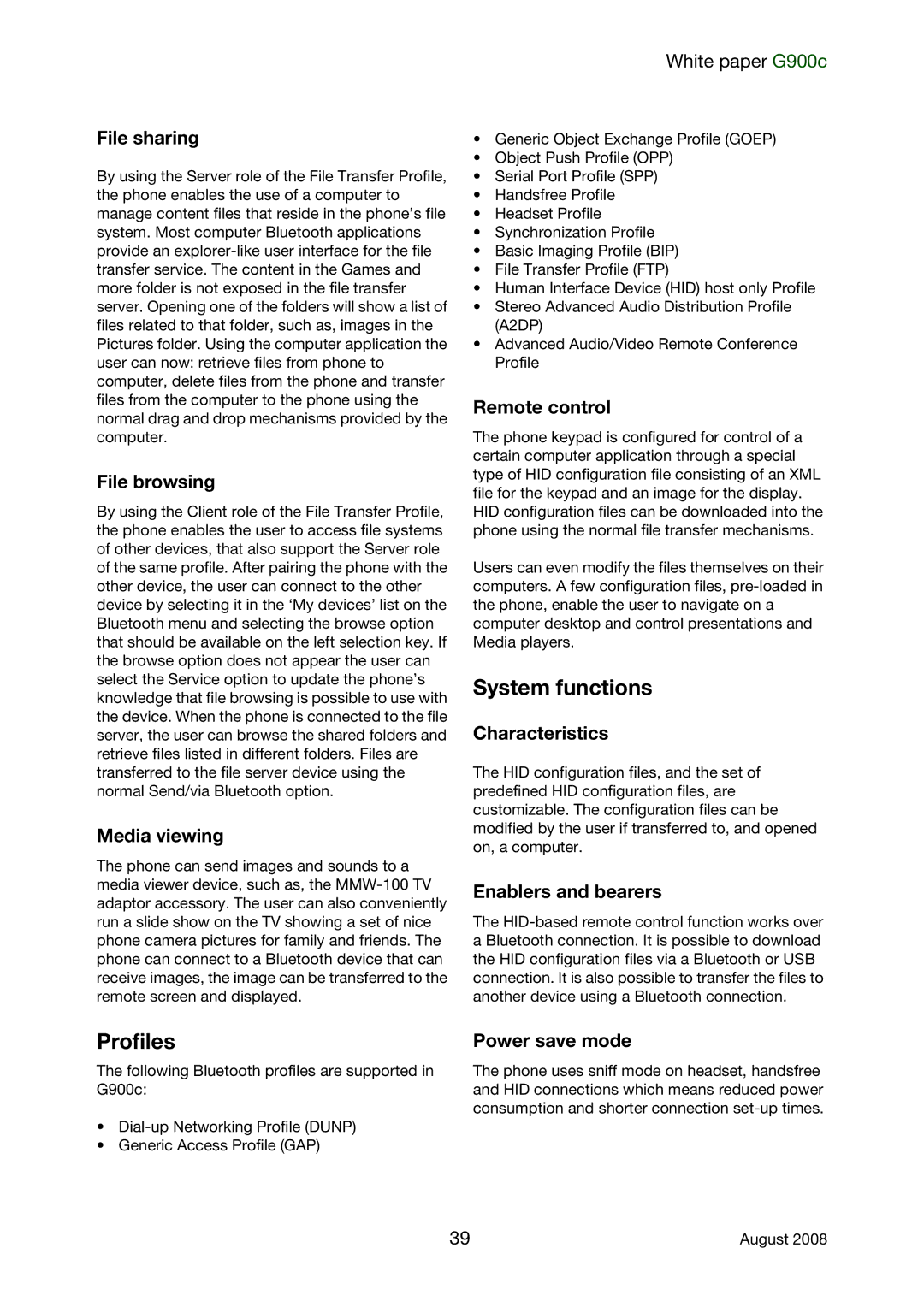File sharing
By using the Server role of the File Transfer Profile, the phone enables the use of a computer to manage content files that reside in the phone’s file system. Most computer Bluetooth applications provide an
File browsing
By using the Client role of the File Transfer Profile, the phone enables the user to access file systems of other devices, that also support the Server role of the same profile. After pairing the phone with the other device, the user can connect to the other device by selecting it in the ‘My devices’ list on the Bluetooth menu and selecting the browse option that should be available on the left selection key. If the browse option does not appear the user can select the Service option to update the phone’s knowledge that file browsing is possible to use with the device. When the phone is connected to the file server, the user can browse the shared folders and retrieve files listed in different folders. Files are transferred to the file server device using the normal Send/via Bluetooth option.
Media viewing
The phone can send images and sounds to a media viewer device, such as, the
White paper G900c
•Generic Object Exchange Profile (GOEP)
•Object Push Profile (OPP)
•Serial Port Profile (SPP)
•Handsfree Profile
•Headset Profile
•Synchronization Profile
•Basic Imaging Profile (BIP)
•File Transfer Profile (FTP)
•Human Interface Device (HID) host only Profile
•Stereo Advanced Audio Distribution Profile (A2DP)
•Advanced Audio/Video Remote Conference Profile
Remote control
The phone keypad is configured for control of a certain computer application through a special type of HID configuration file consisting of an XML file for the keypad and an image for the display. HID configuration files can be downloaded into the phone using the normal file transfer mechanisms.
Users can even modify the files themselves on their computers. A few configuration files,
System functions
Characteristics
The HID configuration files, and the set of predefined HID configuration files, are customizable. The configuration files can be modified by the user if transferred to, and opened on, a computer.
Enablers and bearers
The
Profiles
The following Bluetooth profiles are supported in G900c:
•
•Generic Access Profile (GAP)
Power save mode
The phone uses sniff mode on headset, handsfree and HID connections which means reduced power consumption and shorter connection
39 | August 2008 |
